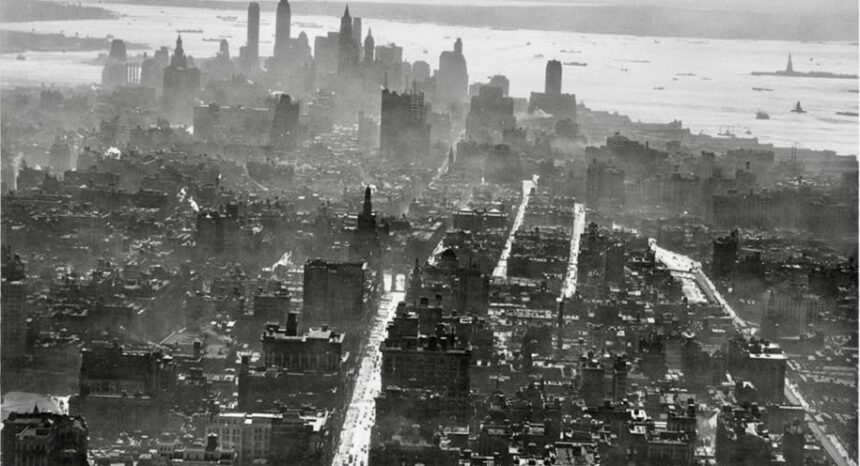When New York is enveloped in pollution, the stock market loses value and sends a negative signal to global markets, a new paper finds.
The issue: Air pollution is bad for our lungs, for children’s health and development, and for the global climate. Researchers also have found smog and dirty air associated with diminished work performance and poorer cognitive output in adults.
Could this be impacting the world’s most advanced economies?
An academic study worth reading: “The Effect of Air Pollution on Investor Behavior: Evidence from the S&P 500,” a working paper published by the National Bureau of Economic Research, October 2016.
Study summary: A team led by Anthony Heyes, an economist at the University of Ottawa, looks at how dirty air could affect the risk appetites of Manhattan-based traders and market-makers — unbeknownst to them — and depress the value of the stock market.
The researchers analyze four types of data across 15 years (2000 to 2014): For equities, they look at returns from the S&P 500 index, a diversified portfolio of companies that often serves as a benchmark for the overall health of the American economy. For pollution, they use Environmental Protection Agency (EPA) data on fine particulate matter (PM2.5) — airborne solids and liquids of less than 2.5 micrometers in diameter. Most PM2.5 emanate from car exhaust and burning fossil fuels for heating and industry. PM2.5 are especially interesting to scientists because they are found indoors as well as outdoors. The authors use the Volatility Index (often known as the “fear gauge”) published by the Chicago Board Options Exchange to chart expected market movement over the next year. Finally, since weather has been associated with market movements, they use EPA weather data as a control.
Heyes and his team also control for other pollutants, time of year and day of the week. They acknowledge that investors are widely dispersed around the globe, but see the “very strong concentration” of market-influencers in New York as indicative of air pollution’s effect. The authors claim to prove causality, not just correlation.
Findings:
- A one standard deviation increase in airborne PM2.5 levels causes an 11.9 percent decrease in that day’s S&P 500 returns (that is not a decrease in the absolute value of the index, but in how the market moved).
- The PM2.5 effects are immediate.
- The authors find a relationship between PM2.5 and risk tolerance, “that a one unit increase in PM2.5 concentration increases the value of VIX by 1.9 percent.”
- The findings can be applied to workers in other occupations in other developed countries and suggest “the detrimental effect of pollution on workplace performance is even more widespread than previously believed.”
- The findings are also an indicator of how pollution can undermine “the efficient operation of a modern economy. […] Variations in the quality of air in Manhattan systematically distort investment signals being sent out across the whole economy.”
Helpful resources:
The S&P 500 equity index — often known as just “the S&P” — is an index of 500 large companies listed in New York and is often seen as bellwether representation of the U.S. economy.
The Environmental Protection Agency (EPA) publishes information and data on fine particulate matter (PM2.5) as does the National Academy of Sciences.
The Chicago Board Options Exchange calls its Volatility Index (VIX) the “world’s premier barometer of equity market volatility.”
Other research:
- PM2.5 has a strong impact on indoor worker productivity, found the authors of a 2016 paper in the American Economic Journal: “Particulate Pollution and the Productivity of Pear Packers.”
- By testing baseball umpires, the authors of this 2016 working paper found cognition sharply decreased even when levels of PM2.5 and carbon monoxide (CO) were below EPA standards.
- Traders in New York tend to sell stocks when the sky is cloudy at market open and the market is more volatile on cloudy days, the authors of this 2008 paper found.
- Israeli high school students in areas with higher levels of PM2.5 and CO perform worse on standardized tests compared to peers in cleaner areas, according to this 2014 NBER working paper.
- Chinese equity markets are negatively impacted for several days after a spike in airborne pollution, this 2016 paper in Applied Economics suggests.
Keywords: Health, pollution, cognitive function, stock market, equities, fine particulate matter, global warming, climate change


Expert Commentary